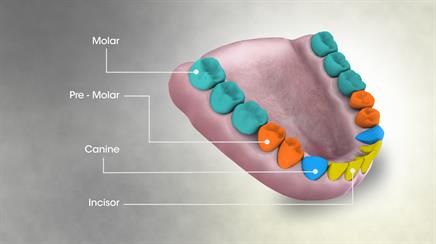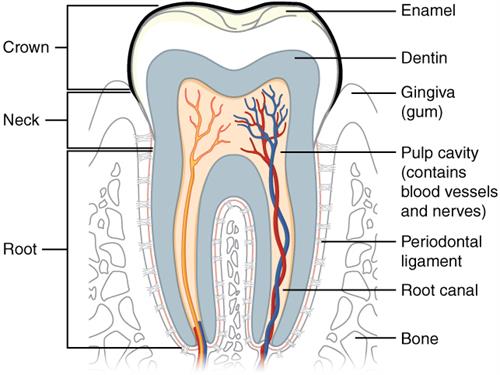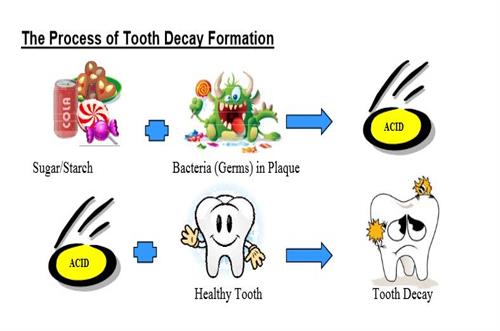
PUMPA - SMART LEARNING
எங்கள் ஆசிரியர்களுடன் 1-ஆன்-1 ஆலோசனை நேரத்தைப் பெறுங்கள். டாப்பர் ஆவதற்கு நாங்கள் பயிற்சி அளிப்போம்
Book Free DemoNow, let us discuss what happens to the food in different parts of the digestive tract. The food enters the digestive system after it has been broken down into smaller particles. Let us understand how food enters into each compartment of the digestive tract.




Mouth and buccal cavity
Food is ingested in the body through the mouth. Digestion of the food starts in the mouth as soon as we eat the food. Mouth, tongue, teeth and salivary glands are present in the buccal cavity. Salivary glands secretes a fluid called saliva, which is a digestive juice, which consists of a enzyme known as salivary amylase. This enzyme in the saliva breaks down the starch into sugar. All these are the process of ingestion.
Teeth:
We chew the food with the teeth, which breaks down the ingested food mechanically. The teeth cut the food into small pieces, which helps in chewing and grinding the food. Each tooth is rooted in separate sockets or pockets in the gums. Teeth vary in appearance and performs different functions. There are 4 types of teeth,
-
Incisor
-
Canine
-
Premolar
-
Molar.

Types of teeth
Parts of the tooth:
-
Root - Anchors the teeth and allows the blood and nerve supply to enter the teeth.
-
Neck - Joint between the gums and crown region of the tooth.
-
Crown - Allows for the breakdown of food and protected by the enamel.
The white and hard outer covering of a tooth is called the enamel and is made up of calcium phosphate.

Tooth anatomy
There are two sets of teeth in our lifetime. These include:
-
Temporary teeth or milk teeth
-
Permanent teeth
Temporary teeth or milk teeth:
There are 20 milk teeth. These develop in a child from 5 to 6 months till about 2 years of age. Milk teeth fall off between the age of 6 to 8 years.
Permanent teeth:
There are 32 permanent teeth - 16 in each of the jaw. The number of each of the different types of teeth and their function is given below:
|
Teeth type
|
Milk teeth
|
Permanent teeth
|
Function
|
| Incisors |
8
|
8
|
Cutting and biting food |
| Canines |
4
|
4
|
Piercing and tearing the food |
| Premolars |
0
|
8
|
Crushing and grinding the food |
| Molars |
8
|
12
|
Effective grinding of food |
| Total |
20
|
32
|
Tooth decay:
Normally there is presence of bacteria in the mouth. If we do not clean them regularly and properly after eating, harmful bacteria begin to grow, and tooth decay occurs.
Tooth decay is when the tooth becomes rotten due to the formation of cavities inside the tooth.

Tooth decay
The bacteria act on the sugar present in the leftover food particles to form acids. The acid eats up the tooth's enamel and dentine, which makes a cavity in the tooth. When not treated properly, it causes severe toothache and, in severe cases, cause tooth loss.

Process of tooth decay
Excessive use of sugar-containing foods such as chocolates, sweets, ice cream, toffees and soft drinks cause tooth decay.
How to prevent tooth decay?
1. Rinse the mouth thoroughly with clean water after every meal.
2. Brushing teeth twice a day with a brush and toothpaste.
3. Dental floss must be used to remove the trapped food particles. Dental floss is a thread that is moved between two teeth to remove trapped food particles.
4. Avoid using dirty fingers or unwashed objects in the mouth.
Tongue:
The tongue is a thick muscular organ that is covered with mucous membrane and completely fills the mouth when jaws are closed. It is attached at the back to the buccal cavity floor and is free at the other end.
Tongue has many taste buds, which helps in identifying the taste of the food. The position of some of the taste buds of the tongue are given below:


Regions of tongue for different tastes
It is also helpful in the process of ingestion. The tongue rolls and pushes the food into the pharynx. It mixes the saliva with the food and also helps us in speaking. In the next theory, we will look into the salivary glands and its role in digestion.
Reference:
https://commons.wikimedia.org/wiki/File:3D_Medical_Animation_Still_Showing_Types_of_Teeth.jpg
https://commons.wikimedia.org/wiki/File:2409_Tooth.jpg
https://commons.wikimedia.org/wiki/File:Diagram_of_tooth_erosion.png
https://commons.wikimedia.org/wiki/File:Process_of_tooth_decay.jpg